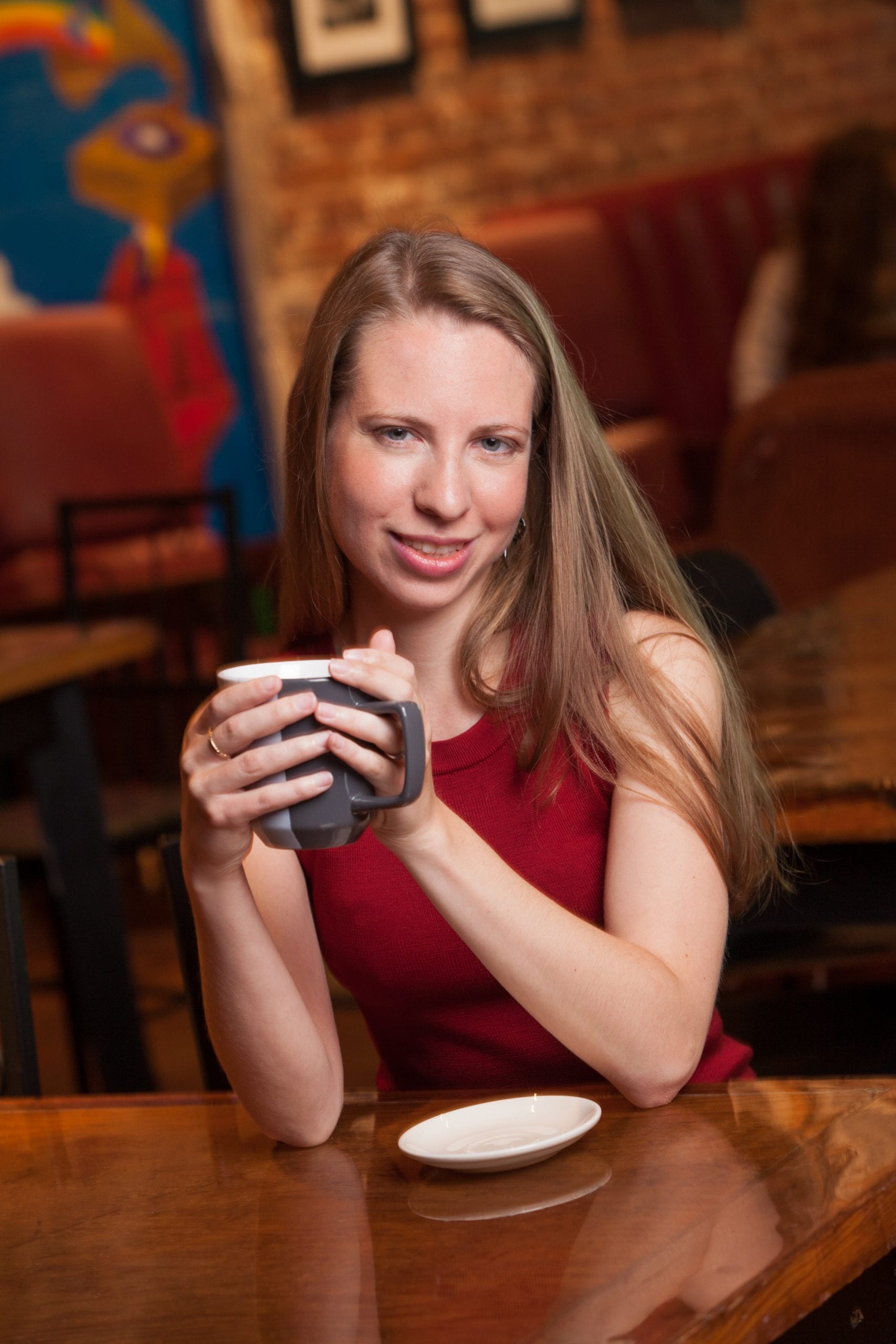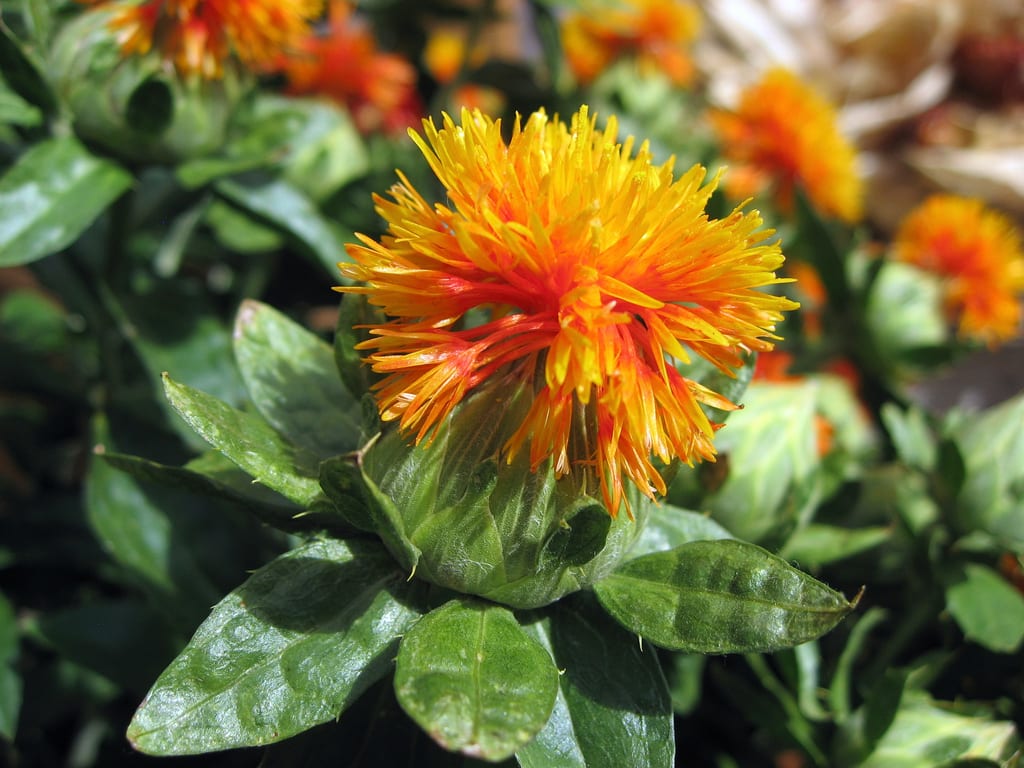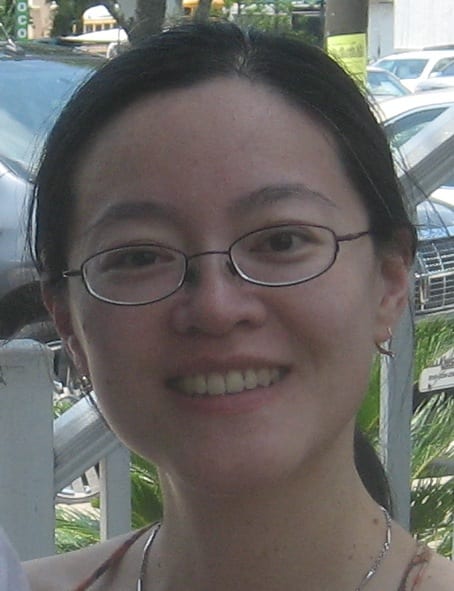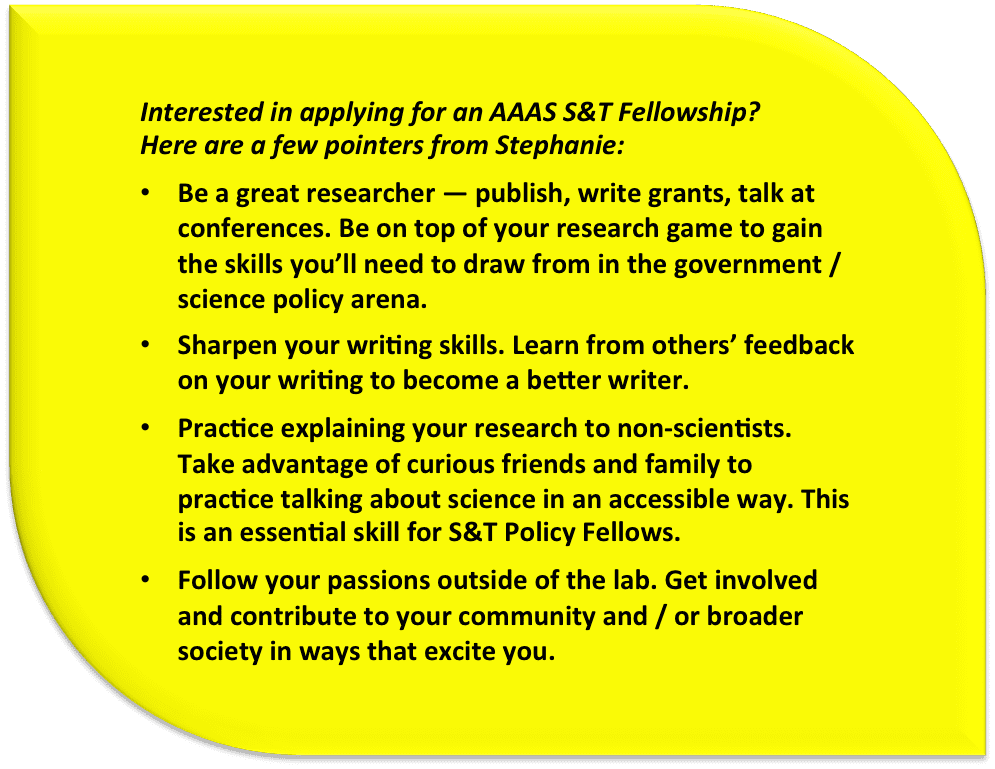Interview with Stephanie Pearl, PhD; written by Anna Lau, PhD

As cofounder of the Athens Science Café, Dr. Stephanie Pearl occupies a special place in our collective heart. She shared with me her path to a nontraditional career as a Science Communicator at a federal agency. What struck me was how her concern for issues affecting society guided her throughout her professional development. As a whole, the pursuit of science benefits society in immeasurable ways, with some areas of study more immediately applicable than others. Stephanie's path shows us that science driven by social conscience can contribute to society in practical ways.
Stephanie earned a BS in Ecology, Evolution, and Organismal Biology from Vanderbilt University, and a PhD in Plant Biology from the University of Georgia. Her thesis examined population genetics and genomics of safflower domestication. Stephanie then conducted postdoctoral research at the Center of Applied Genetic Technologies at UGA on peanut genetics and genomics. “Although I have always had an interest in evolutionary biology, I purposefully chose a research path that focused on crops,†she said. Doing so allowed her to address evolutionary questions and generate resources to help breeders to improve crop varieties. Along the way, Stephanie developed an interest in international development and capacity building (strengthening human and institutional resources before societal problems can be addressed). This interest led her to Kenya and India, to explore how small-scale farmers in developing areas (South America, Africa, and Asia), who are among the poorest people in the world, can grow crops like peanuts and safflower in ways that better fit their needs, cultures, and traditions.

Outside of research, Stephanie spent her free time supporting important causes: promoting STEM education, serving the local community, and improving science communication. To these ends, she co-developed a semester-long curriculum to teach plant biology to local middle-schoolers, co-created and co-taught a science communication class to graduate students at UGA, and co-founded the Athens Science Café.
Stephanie's background prepared her well for her current position as a Science Communicator at the US Department of Agriculture National Institute of Food and Agriculture (USDA NIFA). She landed this position through the American Association for the Advancement of Science (AAAS) Science & Technology Policy Fellowship. Its mission is to foster a network of science and engineering leaders who can develop and execute solutions to societal challenges.
“As a Science Communicator at NIFA,†Stephanie explains, “I attend meetings, and I write, edit, and develop communications plans with my colleagues. I draw from my experiences as a researcher and a science communicator to make complicated material accessible to a variety of audiences. For example, I write blogs for a general audience about the research our agency funds, write talking points to help our agency’s Director prepare for speeches and presentations, and help revise the budget explanatory notes that our agency submits to the White House Office of Management and Budget in preparation for the President’s budget. Ultimately, my job is to help communicate to our partners and stakeholders the outcomes of NIFA’s investments in agricultural research, education, and extension.â€

On a more practical level, her research training in crop genetics and genomics allows her to recognize terminology and explain complicated topics in easy-to-understand terms. “I am able to understand scientific articles in other fields and make them broadly accessible to a general audience, for example, in the form of tweets.†She also uses her communications skills to craft meaningful, accurate responses to media requests for reactions of the agency to “hot topics†in science and agriculture.
Stephanie really enjoys her current position, because she believes strongly in the mission of NIFA to advance agricultural research, education, and extension to solve societal challenges. As a member of the Communications Staff, she gets to write about all of the amazing programs that the agency funds. “I find it much more satisfying to write materials on a regular basis (instead of one big project that takes a few years to complete) that are read by the general population (as opposed to manuscripts that are read by just a handful of scientists). It feels really good to work on documents such as our agency’s budget justification, which is an important part of the federal budget process to get financial support for the agricultural research, education, and extension community.â€
Stephanie says that enthusiasm for her work is tempered by several factors. “It can be very frustrating working for the government. Academic freedom has a whole new meaning to me now. I miss being able to lead a program and make a decision without having to go through multiple layers of bureaucracy. Additionally, there are limitations on what I can write about as a federal employee working as a science communicator.â€
In closing, Stephanie encourages students to “Follow your heart! If you ever hear a voice inside of you question whether a ‘traditional' academic research career is for you, you should probably listen to that voice and explore other options. It can be very difficult to listen to that voice and even know where to look for other options while working in the academic environment. The AAAS S&T Policy Fellowship is a prestigious fellowship and great way to experiment with something outside of academia. As fellows, we are constantly peppered with ideas and non-academic opportunities.â€
For more information about:
- The AAAS Science & Technology Fellowship: http://www.aaas.org/program/science-technology-policy-fellowships. AAAS S&T Policy Fellowships are offered annually. There’s no age limit! Professors can do it on sabbatical, folks do it upon retirement, and many of are fresh out of PhD’s or postdocs.
- Science communication:
- Escape From the Ivory Tower: A Guide to Making Your Science Matter by Nancy Baron
- FrameWorks Institute: http://www.frameworksinstitute.org/ (check out their communications strategy and design materials)
This interview was conducted with Stephanie Pearl, PhD in her personal capacity. The opinions expressed in this article are her own and do not reflect the view of the Department of Agriculture or the United States government.
About the Author
 Anna Lau loves everything science, medicine, and art. When she's not at her day job as a medical writer, she can be found in her kitchen whipping up a sweet treat or outside trying to keep up with her critters. The perfect vacation for Anna would involve a state or national park, a museum, and yummy food. More from Anna Lau. Anna Lau loves everything science, medicine, and art. When she's not at her day job as a medical writer, she can be found in her kitchen whipping up a sweet treat or outside trying to keep up with her critters. The perfect vacation for Anna would involve a state or national park, a museum, and yummy food. More from Anna Lau. |
About the Author
- athenssciencecafehttps://athensscienceobserver.com/author/athenssciencecafe/April 17, 2020
- athenssciencecafehttps://athensscienceobserver.com/author/athenssciencecafe/April 12, 2020
- athenssciencecafehttps://athensscienceobserver.com/author/athenssciencecafe/April 3, 2020
- athenssciencecafehttps://athensscienceobserver.com/author/athenssciencecafe/March 30, 2020









